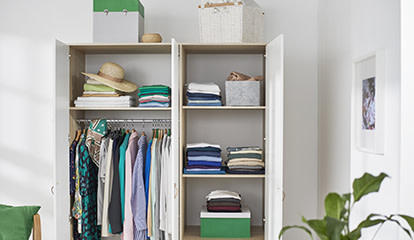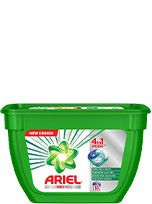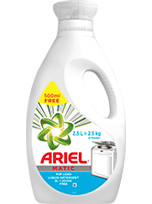Nail polish is a cosmetic lacquer that comes in a variety of colours, but it’s more than just a dye stain. Since it’s made up of various chemicals, nail varnish hardens into the fibres of the fabric when it dries, making it difficult to remove when you spill it on your clothes. If you think you need to throw out that much-loved shirt or get heavy-duty solvents to dissolve the nail polish embedded in your garment, we’re here to help. Follow Ariel’s tips on how to remove nail polish stains safely by reading our instructions about removing nail polish stains from clothes or carpets below. This is what you’ll find below:
6 simple steps on how to remove nail polish stains
Spilling some ruby red nail polish on your favourite pair of pants or blouse might seem like the end of the world, but with this easy-to-follow nail polish stain removal guide from Ariel, you can tackle any and all at-home manicure disaster!
1
Remove excess
First, let the nail varnish dry, then scrape off any excess stain from the garment with a spoon and a paper towel without spreading the stain further. Rinse under cold, running water.
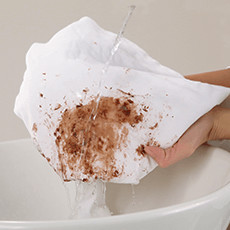
2
Pre-treat
For optimal stain removal, consider pouring a bit of Ariel Matic Powder Detergent directly onto the stain.
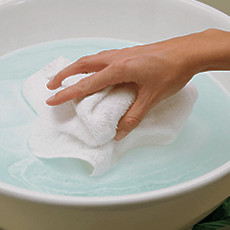
3
Add detergent
Use Ariel Matic Powder Detergent or Ariel Matic Liquid Detergent, and make sure to check dosage instructions on your pack, or read our guide on how to use and dose Ariel powders or Ariel liquids.

4
Load
Add the nail polish-stained garment directly into the drum of your washing machine alongside similar clothes in terms of colour and fabric type, using the palm trick to determine if your load is the right size.
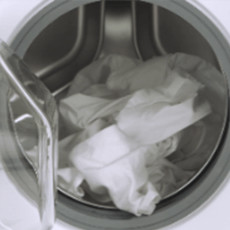
5
Wash
Select the appropriate wash cycle, based on the garments’ fabric care label. Ariel PODS have been designed to deliver an outstanding clean, even on cold and quick cycles. However, if your clothes are heavily stained, a higher temperature and a longer cycle can also help.
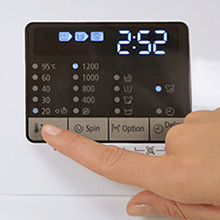
6
Unload
Take the clean clothes out of the drum immediately after the wash has finished for the best results.
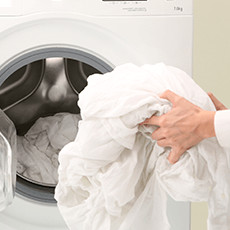
If the nail polish stain persists after washing, repeat the previous steps before drying, as that will just set the stain further in.
How to remove nail polish stains with nail polish remover
You can also try using an acetone-based, dye-free nail polish remover to help get rid of stubborn nail polish stains. If your garment is made from acetate, triacetate, or modacrylic, do not try to pre-treat with nail polish remover! Otherwise, grab an absorbent white cloth or paper towels and follow the below steps:
Do not rub the stain into the fabric, as this will only spread the nail polish into the garment’s fibres.
Soak the white cloth or the paper towel in your solvent, and test for colourfastness on an inconspicuous part of the garment. If no colour comes off on the towel, continue to pre-treat.
Rub the stain with the cloth in a circular motion, from the outside in, to keep the stain from spreading. Use dabbing motions to transfer the nail polish from your garment to the cleaning cloth.
Machine wash as usual with your choice of Ariel laundry detergent.
How to remove nail polish stains from carpet and upholstery
Nail polish stain on clothes that’s something that’s not hard to imagine, but on your carpet? Seems unlikely – until you accidentally spill a bottle or smear your still-wet toenails on your heirloom floor covering. Here’s what you should do if that happens:
1
Test the fabric.
To make sure that you won’t further damage the fabric of your carpet or upholstery, apply a dab of acetone on a hidden area.
2
Remove excess.
Gently scrape away as much of the nail polish as you can without spreading the stain further by using a spoon and a paper towel.
3
Apply acetone.
Dip a cotton swab in acetone and lightly dab the stained area until you’ve removed as much of the stain as possible.
4
Finish with dry-cleaning solvent.
If you still see some nail polish residue on the fabric, let it dry and sponge the spot with a dry-cleaning solvent, using a clean white cloth. For your safety, keep the room well ventilated as you use the cloth to absorb the stain.
5
Rinse.
When the stain is gone, sponge the area with clean water and blot dry using paper towels. Allow the fabric to air dry away from direct heat and vacuum to lift loose fibres.
Extra tips for dealing with nail polish stains
Here are some additional pieces of advice for an even more effective stain removal process:
You can also pre-treat stains using rubbing alcohol or dry-cleaning solvent, if you have it.
Always check the fabric content label first before attempting to remove any stains. If the item's material contains acetate, triacetate, or modacrylic, or if it's a delicate or dry-clean-only item, do not try to pre-treat with solvents, and take it to the dry cleaner as soon as possible.
If you are using any solvent for stain removal, always test for colourfastness first.
Treat nail polish stains as soon as possible, as nail polish dries quickly on fabrics – great for an at-home manicure, but not ideal for stain removal.

FAQs on how to remove nail polish stains
Still haven’t found the answer you’re looking for? Don’t worry, below you can find a list of some of the most frequently asked questions about nail polish removal, and the solutions that go with!
Nail polish stains are not the only thing on your beauty routine checklist that can leave behind unwanted stains. Luckily, you can get rid of a lipstick stain or other makeup stains with a little help from Ariel, which gives you outstanding stain removal results in just one wash.
Related articles
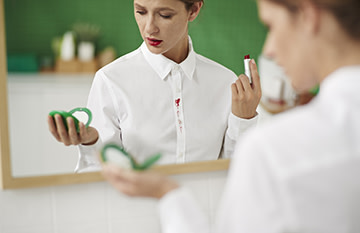
How to remove lipstick stains
Lipstick stains rank pretty high among the most-difficult-to-remove category, as they’re not only brightly coloured, but also contain dozens of ingredients that all leave different types of stains on your shirt, like oils, waxes and pigments, which can actually dye the fabric permanently.
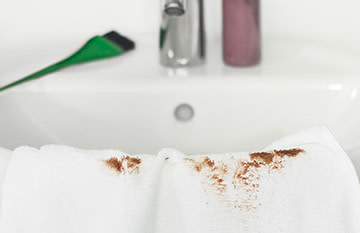
How to remove hair dye stains
Dying your hair a new colour is always fun, accidentally colouring your favourite blouse or T-shirt in the process, not so much.
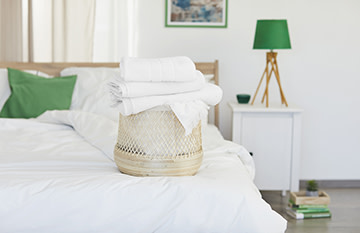
How to wash white clothes and other white fabrics
Whites have many faces – delicate, regular and special whites, but they have one thing in common: they all need to look impeccably bright in order to impress.

